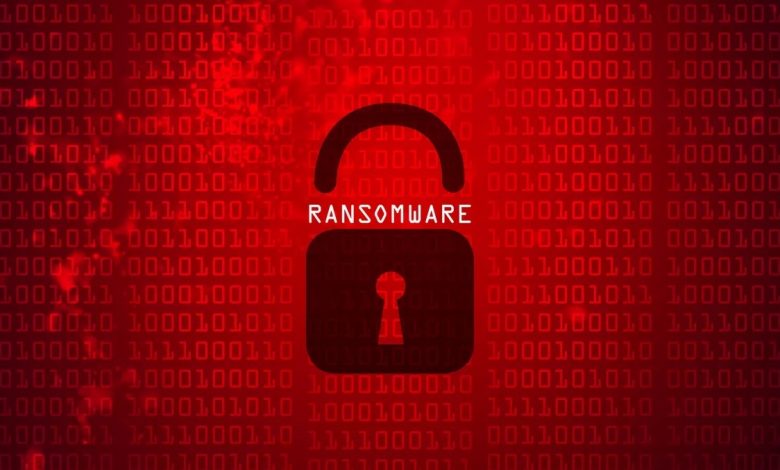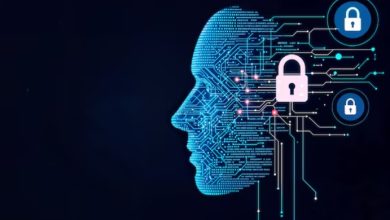Why it is Time to Rely More on Machines in the Fight Against Ransomware

Written by: Martin Dale Bolima, Tech Journalist, AOPG
Every cyber threat is a concern. But ransomware is arguably the biggest threat today, especially for organisations in Southeast Asia. In fact, research by Kaspersky found that approximately two-thirds of businesses in the region got hit by ransomware, with several victimised not once but several times.
Most of these victims actually paid a ransom, and nearly half admitted to paying immediately so as to regain access to their all-important data, while a few took nearly a week but ultimately paid up. More telling, the majority of business leaders in the region say they will pay up in case of a repeat attack, underscoring what may very well be an alarming trend: Most organisations in Southeast Asia might be ill-equipped to deal with ransomware, thus leaving them little choice but to pay the ransom.
To be fair to these business leaders, ransomware is quite a formidable adversary, and it is evolving to become even more dangerous. And in this digital-first world, ransomware figures to be even more prevalent than it is now.

“Ransomware is getting more sophisticated, and it is increasing in frequency in the entire Southeast Asian region,” said Andy Ng, Vice President and Managing Director for Asia South and Pacific Regions at Veritas Technologies. “And with the pandemic, we’re seeing rapid digitalisation, digital transformation and cloud adoption, especially across Southeast Asia. But with the increased use of digital technologies, cybercriminals are increasing the impact of ransomware attacks by targeting cloud services and data.”
A Very Bad Ransomware Situation is Getting Worse
The situation is already bad enough. But it might be getting worse, with Ng noting how threat actors are now targeting organisations providing essential services, like banks and even hospitals. A common denominator of these essential service providers is that they rely heavily on data, thereby giving cybercriminals greater incentive to interfere with these organisations.
A case in point was the series of ransomware attacks on hospitals in Thailand in September 2020—or right about the time the COVID-19 pandemic was ravaging the region. Singaporean organisations, meanwhile, appear to be firmly in the crosshair of ransomware attackers, with over 80% being victimised by an attack over the past two pandemic years. The same is true with Malaysian organisations, according to Ng, with 79% admitting in a 2021 survey that they have been hit by ransomware.
That these attacks are occurring just as the region is facing the worst health crisis in recent memory speaks of a callousness—nay, heartlessness—on the part of cybercriminals. Combined with the growing sophistication of ransomware methodologies (witness, for example, the rise of ransomware kits), it would be safe to assume ransomware attacks will get more frequent, more sophisticated and more dangerous.
Hope on the Horizon
But for all that gloom and doom, organisations need to keep in mind they can do something to fend off ransomware. And they can do that by leveraging Artificial Intelligence and Machine-Learning, described by Ng as predictive technologies that enable security teams to “conduct proactive monitoring for downtime and faults, and also take preventative measures before any disruptions can occur.”
“The speed of malware encryption is so high that prevention makes far more sense than actual mitigation. Machine-Learning programs can analyse large quantities of data and access a system of responsive behaviours towards a certain identified pattern,” explained Ng. “Meanwhile, AI is used to correctly identify those who wish to access data as well as model potential attacks and establish countermeasures. So, by using AI and ML, we’ll continually learn and adopt information to be more effective and efficient.”
Both AI and ML are key components of autonomous, multi-cloud optimised solutions, which leverage AI and ML to detect security threats and continuously optimise operations. These solutions, according to Ng, can “reduce the operational burden and increase protection and operational efficiency”—but with little to no human intervention. Incidentally, reducing reliance on human capital is crucial in the fight against ransomware. The reason, as Ng pointed out, is that not all organisations will be able to hire the additional IT staff they need to fortify their cybersecurity. This means machines will be playing a central role in the war against ransomware moving forward.
One thing machines can do in this case, with the help of AI and ML, of course, is provide Autonomous Data Management (ADM). ADM, Ng explained, can “independently find and protect data no matter where it lives.” Moreover, it can “continuously determine where and how to store data in the most efficient and secure way possible.” And, by being independent, an ADM can do all that without human involvement, making it an ideal solution for organisations on the losing end of the global war for talent.
“Autonomous Data Management basically allows enterprises to unlock full cloud benefits, including operational scale and agility, and we do that by harnessing the power of AI and ML and hyper-automation,” said Ng. “So, ADM will help IT departments to simplify tasks, deliver lower TCO, increase efficiency and improve security.”
Fighting Off Ransomware With ADM
Putting it simply, ADM is a modern means to fend off ransomware—and to protect an organisation’s data entirely. This is where Veritas comes in. With its Cloud Scale Technology, Veritas can help organisations leverage ADM in the fight against ransomware and win the larger data protection battle. And by providing assistance in easing common pain points in ADM deployment, like high operational costs and manual operations, Veritas is able to help businesses of all types and sizes.
“Cloud Scale Technology delivers containerised, programmable and AI-powered microservices architecture that provides autonomous, unified data management services across any cloud,” Ng explained. “This new technology helps Veritas simplify how businesses manage their data and automate protection from cyber threats, like ransomware, with AI-powered malware scanning and anomaly detection and flexible data recovery options, whether on-prem or in the cloud.”
But, again, ransomware and the entire threat landscape are ever-evolving, and this underscores a pressing need for organisations to evolve themselves. To this end, Ng highly recommends that businesses come up with a data protection strategy—and find the right technology partner that can help them with their data management needs.
Veritas is one such partner, and its recently launched Veritas Alta is further proof of the company’s commitment to providing organisations with next-generation data protection solutions. Just as important, Veritas, according to Ng, “is more than happy and willing to help” organisations with their data-related needs.
With the ransomware situation projected to get worse, this is an offering that organisations might want to take up.




